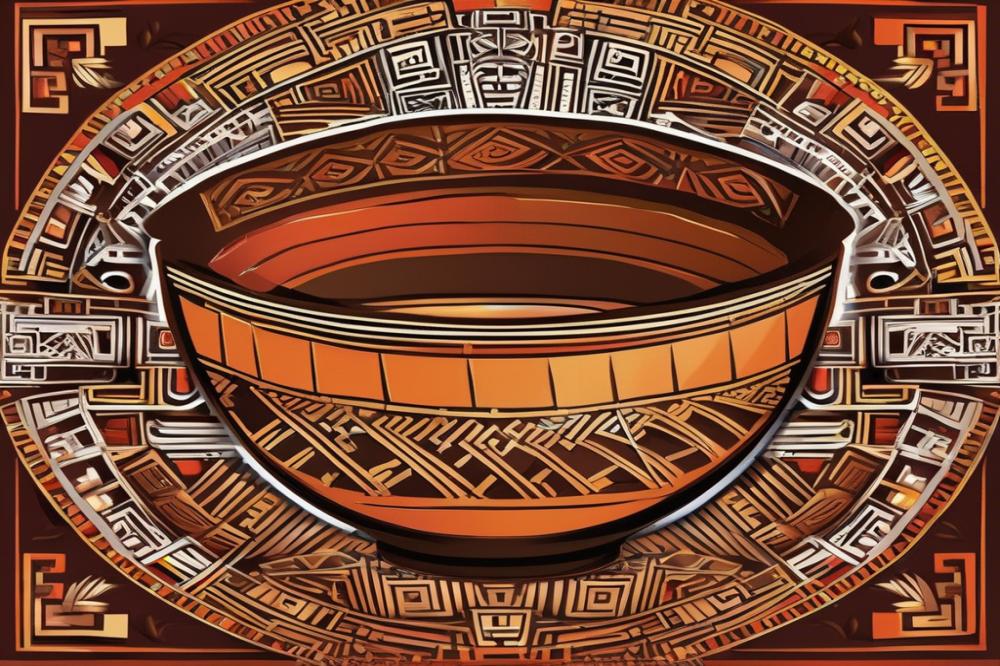Germany’s Chocolate Craze: A Dive into Its Consumption Trends and History
Germany stands as a leader in chocolate consumption across Europe. This nation is not just a consumer of sweets; it plays a significant role in shaping the confectionery market. Chocolate consumption reflects broader cultural preferences, influenced by history and modern trends. Understanding Germany chocolate consumption helps us grasp how tastes have evolved over time.
With a rich history, chocolate became a part of life in Germany a long time ago. The cultural significance of chocolate cannot be overstated. From delightful desserts to special celebrations, it holds a place in the hearts of many. Numerous chocolate brands have emerged, each bringing its own flair to the table. Consumers often seek quality, which has recently led to a rise in artisan chocolate options.
Trends show that taste is changing too. Flavors that once dominated are being replaced by innovative ideas. Chocolate festivals celebrate this creativity, allowing makers to showcase their latest creations. Moreover, awareness of cacao origins informs buyer choices. Shoppers now prefer chocolates that tell a story, highlighting ethical production practices.
German chocolate history reveals how these preferences have been shaped over generations. The evolution of chocolate production in the country mirrors changes in society and consumer demands. Thus, as we explore the realm of chocolate in Germany, it becomes clear that every sweet bite is steeped in cultural ties and historical significance.
Historical Context of Chocolate in Germany

The journey of cacao into Germany stretches back to the early 18th century. When it first arrived, cacao was a novel ingredient that intrigued many. Consumption in those days was quite different from what we see now. Hot beverages made from cacao gained popularity among the elite. They enjoyed the drink, appreciating its rich flavor and luxurious nature.
Over time, the landscape of chocolate production changed. By the late 19th century, strides were made in manufacturing techniques. The invention of the steam engine allowed for larger-scale production. confectionery shops began popping up in cities, offering chocolates to a broader public. Notable brands like Ritter Sport and Milka emerged during this period, making their mark on the sweets market.
Major events also shaped the evolution of chocolate trends. The World Wars had a significant impact on consumer preferences. During these hardships, chocolate became a symbol of comfort and indulgence. After the second war, Germany saw a chocolate boom. The demand for sweets surged, and new varieties of chocolate emerged, catering to various tastes.
The cultural significance of chocolate is hard to overlook. Festivals celebrate this beloved treat, showcasing artisanal chocolate and local brands. These events create a space for chocolatiers to display their skills and creativity. The rise of artisan chocolate reflects changing attitudes toward consumption. People increasingly seek quality over quantity, leading to a greater appreciation for cacao origins.
As trends continue to evolve, the chocolate industry in Germany remains vibrant. The combination of traditional methods and modern innovations keeps consumers engaged. Chocolate lovers now have access to a diverse range of products, from classic bars to gourmet treats. German chocolate brands play a crucial role in this ongoing narrative, shaping what people enjoy and how they celebrate this delightful confection.
Current Trends in Germany’s Chocolate Consumption

Germany continues to showcase a rich landscape in its chocolate trends. Recent statistics paint a vivid picture of the nation’s sweet tooth. Analysts note that chocolate consumption is rising steadily, with an increasing preference for higher quality options.
Artisan chocolate and small producers have gained significant traction recently. Consumers are eager to explore unique flavors and premium selections. These brands often highlight their cacao origins, connecting their products to specific regions. Chocolatiers are responding by offering a diverse range of handmade creations that attract discerning buyers.
When it comes to consumer preferences, dark chocolate is steadily winning hearts. Many people are now leaning towards dark over milk chocolate. This shift is likely influenced by growing awareness of its health benefits. Furthermore, organic options are capturing attention as consumers become more health-conscious. They want sweets that align with their lifestyle choices.
The sweets market has also been affected by health trends. People are reading labels more carefully than ever before. They desire treats that fit within a balanced diet. As a result, brands are adapting their recipes to integrate healthier ingredients while not compromising on flavor. This evolution is essential as consumers want to indulge without guilt.
Chocolate festivals across Germany celebrate this love for the sweet treat. Events showcase an array of local and international chocolate brands. Visitors enjoy tastings and get to know more about the manufacturing process. Such gatherings highlight the cultural significance of chocolate in German society. They also forge a deeper connection between consumers and chocolatiers.
The increasing demand for quality products means that chocolate production methods are changing. Traditional techniques are now blended with modern practices. In this context, artisanal craftsmanship stands out, often regarded as a marker of excellence. This evolution emphasizes the importance of sourcing high-quality ingredients.
Cultural Significance of Chocolate in Germany
Role of chocolate in German traditions and celebrations
Chocolate has become a significant part of many German traditions. Birthdays, holidays, and family gatherings often include various types of sweets. It’s common to see chocolate used in desserts that accompany festive meals. During Advent, chocolate treats are found in calendars to count down the days. Christmas markets highlight chocolate-covered fruits and spiced confections. Such customs reveal how integral chocolate is to celebrations.
Germany’s unique chocolate festivals and events
Chocolate festivals abound across the country, attracting enthusiasts from all over. One of the most popular events is the Chocolate Festival in Cologne, where artisans showcase their skills. Visitors can sample an array of treats and learn about different chocolate trends. Events celebrate cacao origins through workshops and tastings. Berlin also hosts a festival that highlights local chocolatiers. These gatherings create a lively atmosphere, making chocolate more than just a sweet treat.
Exploration of famous German chocolate brands and their contributions
Germany boasts several renowned chocolate brands that have left a mark on the sweets market. Companies like Ritter Sport have introduced unique flavors and combinations over the years. Their commitment to quality has set a standard in confectionery. On the other hand, brands like Lindt offer a range of artisan chocolate, appealing to varying consumer preferences. Many brands also focus on ethical sourcing of cacao, reflecting a growing awareness of sustainable practices. Each brand contributes to the rich tapestry of chocolate culture in Germany.
The Economic Impact of Chocolate in the Sweets Market
Germany’s chocolate industry plays a vital role in the nation’s economy. This sector not only contributes significantly to employment but also generates impressive revenue. Each year, Germans consume large quantities of chocolate, solidifying its status in the sweets market. Various factors influence chocolate trends, including changing preferences and cultural significance.
Key Players in Chocolate Production and Market Share
Many prominent chocolate brands operate in Germany. Companies such as Ritter Sport and Lindt are key players in this space. Their presence demonstrates the market’s competitive nature. These brands often engage in innovative marketing and product development. As a result, they attract a diverse customer base. Market share data indicates that a few major companies dominate, yet artisan chocolate producers are gaining traction. These smaller brands often emphasize quality and sustainability, appealing to today’s conscientious consumers.
Future Outlook for Chocolate Consumption Trends
Looking ahead, chocolate consumption trends appear robust. Experts predict a steady growth in demand influenced by various factors. Young consumers show interest in unique flavors and ethical sourcing. Chocolate festivals across Germany reveal the excitement surrounding new cacao origins. These events celebrate both classic and innovative offerings, reinforcing the cultural importance of chocolate. With a rising awareness of health benefits linked to dark chocolate, shifts in consumer preferences may continue to evolve. As the sweets market expands, companies will need to adapt to remain relevant.
Germany’s strong history with chocolate ensures that it remains a staple in its economy. The blend of tradition and modernity continues to shape its chocolate production landscape. Local producers often highlight artisanal craftsmanship, a trend that’s becoming increasingly popular. Therefore, chocolate’s economic impact in Germany is likely to grow, fueled by the nation’s unwavering passion for this beloved treat.
Final Thoughts on Germany’s Chocolate Journey
This article explored the rich history and consumption patterns of chocolate in Germany. The deep-rooted love for this sweet treat is evident in many aspects of life. From high-quality brands to local artisans, it seems that chocolate is woven into the fabric of German culture. The rise of diverse preferences highlights changing tastes over the years. Consumers are now more aware of quality and origin, desiring much more than mere indulgence.
Chocolate holds an esteemed place in festivals, holidays, and everyday snacks. Its presence in traditional celebrations showcases its significance. Families often bond over shared moments with this delightful confectionery. The evolving landscape of chocolate trends, including the rise of vegan options and artisanal varieties, reflects modern demands. People are increasingly seeking healthier choices without sacrificing flavor.
Looking ahead, the future of chocolate consumption in Germany appears promising. Innovations in production and a focus on sustainability may shape the market. As new flavors and textures gain popularity, traditional chocolates will still hold a special place. Observing how the industry adapts to shifting tastes will be intriguing. Chocolate will likely continue to unite people across generations. Germans will savor this culinary treasure, ensuring its legacy remains vibrant for years to come.



